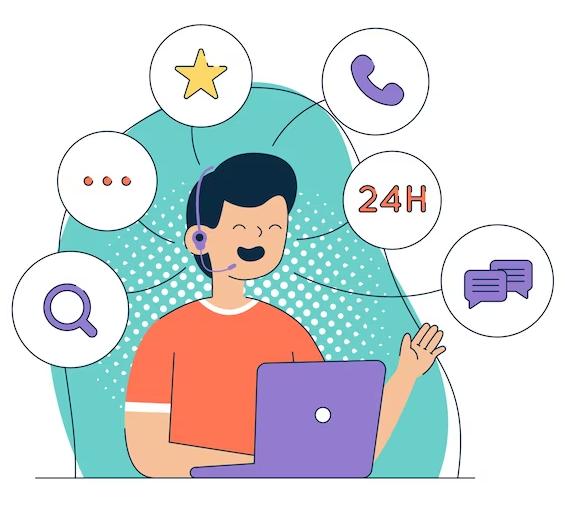Published at eCommerce by Sael

Top eCommerce Challenges Faced by Small Business
Published at eCommerce by Sael
E-commerce is a key part of the growth and success of small companies. It helps you sell to people all over the world. Also, you can sell to more people without spending too much money than you could in person.
E-commerce helps small businesses go online, get known, and compete with big companies. It helps people shop easily, anywhere, making more money. E-commerce helps small businesses get customer information, do personalized marketing, and work better. Small businesses should use eCommerce to do well and keep up in the digital age.
In this blog, we will explore the top eCommerce challenges small businesses face and provide practical insights on overcoming them.
Table of Contents
1. Top eCommerce challenges that small firms must overcome and solutions
1.1. Limited Budget
1.2. Building Brand Awareness
1.3. Online Traffic
1.4. Trust Building
1.5. Managing Inventory
1.6. Seamless Customer Service
2. Conclusion
1. Top eCommerce challenges that small firms must overcome and solutions
1.1. Limited Budget
The first eCommerce challenge is Limited Budget. When it comes to e-commerce, small businesses often face the challenge of limited financial resources. This limit can significantly affect their ability to invest in important things like online shopping systems, advertising, and skilled workers. Small businesses may struggle to keep up with big companies in technology, websites, and getting customers if they don't have enough money.

a. Strategies for cost-effective e-commerce infrastructure development
Good news! Small businesses can use affordable strategies to build their online shopping systems. You can use e-commerce platforms that have cheap plans and easy-to-use templates. These platforms help businesses make online stores that look professional. You don't need to be a tech expert or spend much money on custom development and overcome eCommerce challenges
Another way is to use cloud solutions that can change in size and be flexible. This lets businesses only pay for what they need. Cloud computing services include storage, server hosting, and customer relationship management (CRM) tools. You can use them by paying a subscription fee instead of a lot of money upfront. This way, you can adjust the services as your business gets bigger.
b. Creative marketing techniques with a small budget
Marketing is essential for online business success, but small businesses often need more money for marketing. There are these eCommerce challenges. To get past this problem, you can use creative marketing methods. Social media is a cheap way to connect, inform people about your brand, and get potential customers. Small businesses can significantly impact without spending much money by posting good stuff, talking to followers, and using user-generated content.
Content marketing is a robust tool that can be used even with little money. Making good blog posts, videos, or infographics that help customers and give useful information can bring in more visitors, show expertise, and increase sales. Also, working with famous people or experts in the field who like the brand can make more people interested and know about it without spending a lot of money.
Small businesses can overcome budget challenges in e-commerce by using these strategies. They can save money and attract more customers by using innovative strategies for building things and advertising online. This will help them grow their business.
1.2. Building Brand Awareness
The second among the eCommerce challenges is Brand awareness. The importance of people knowing and recognizing a brand in online shopping is vital.

In online shopping, it's essential to be recognized and stand out to do well. Creating a solid brand identity helps small businesses gain trust, stand out from competitors, and keep customers returning. A well-known brand brings in new customers and makes people want to buy again and tell others about it.
Ways to make more people know about your brand without spending much money:
a. Creating a strong brand story
You need to think carefully and develop clever ideas to make more people know about your brand without spending much money. An excellent way to save money is to have a clear message and use the same branding everywhere. This includes the website, packaging, and marketing stuff. Creating a strong brand story and using it in marketing can make customers feel connected.
b. Content Marketing
Content marketing helps small businesses make more people aware of their brand. Businesses can become industry experts by making content that educates and interests their audience. You can share this content in different ways, like blog posts, videos, infographics, or guides you can download.
c. Social Media
Social media can help small businesses get more people to know about their brand without spending much money. Businesses can create a group of loyal followers by connecting with their target audience, sharing helpful content, and using user-generated content.
d. Influencer Marketing
Working with influencers is a cheap way to make more people know about your brand. Working with famous people or experts in the field can help small businesses reach new customers and seem more trustworthy. Influencers can help sell things by talking about them online. They might get paid to do this or get free stuff to give away. This makes more people know about the brand and get excited about it.
By using these strategies, small businesses can build brand awareness without spending much money and overcome eCommerce challenges. To do well in online shopping, they can strengthen their brand, use content marketing, and work with social media and influencers.
1.3. Online Traffic
Getting the right people to visit your website is difficult and one of the eCommerce challenges. Getting exemplary visitors to your online store can be challenging, especially when bigger businesses with more money for advertising are also trying to do the same.

a. Make good content that your audience likes and needs
You can use infographics, blog posts and videos. Work with famous people who can tell their fans about your products so more people will know about them. Use Ads like Facebook Ads and Google Ads to reach specific groups of people and get more visitors to your website.
b. Search Engine Optimization
SEO is when you do things to make your website appear higher in search results. Use the right words in your product descriptions, meta tags, and website content to get more people to visit your website. This will help search engines display your site to more people. Also, making good content, getting backlinks, and loading your website faster can help your SEO.
c. Pay-Per-Click Advertising
PPC advertising helps you get more visitors to your online store by bidding on words related to what you sell. You can use Bing Ads and Google Ads to show ads at the top of search results or on other websites. To make your PPC campaigns work well, you need to do three things: find good keywords, write ads that people like, and make your landing pages better. These help in overcoming eCommerce challenges.
1.4. Trust Building
Small businesses need to gain trust when selling online because customers might not want to buy from brands they don't know. So, how to overcome these eCommerce challenges?

The solutions are:
a. Customer Reviews:
Ask happy customers to write reviews and testimonials on your website or other review sites to show others that they like your product.
b. Safe payments
Make sure your online store has secure ways for customers to pay so they feel confident. Make sure your return and refund policies are easy to understand. This will help customers feel more confident and trust your business. It is an essential tip to get the better of eCommerce challenges.
c. Transparent Product Information
Give clear and specific descriptions of products, including details like size, measurements, and good pictures. Be truthful about the product's availability, the delivery cost, and the return procedures. Providing transparent and honest information helps customers trust what they're buying. They feel more confident when they know exactly what they're getting.
d. Trust Seals and Certifications
Show badges that prove your website is trustworthy. These badges are given by influential organizations like the Better Business Bureau (BBB), Verified by Visa, or Trusted Shops. These trust indicators show customers that your business is honest and follows industry rules.
1.5. Managing Inventory
Inventory management and fulfilment are complex and it is vital for managing eCommerce challenges. Small businesses with limited resources and storage space may struggle to handle inventory and order fulfilment.

The solutions are
a. Track Inventory
Use a system to keep track of your inventory. It will help you know how much you have, keep track of sales, and automatically order more when needed.
b. Dropshipping
You can establish partnerships with suppliers who offer drop shipping services. This allows you to fulfil orders without storing inventory. Outsourcing fulfilment means using another company to store your products, process orders, and ship them. This helps you save time and resources.
c. Demand Forecasting
Use past sales data, market trends, and seasonal patterns to predict how much people will want to buy your products in the future. This helps you predict what customers will want and change how much inventory you have. Using forecasting tools or inventory management software with demand forecasting can help you make better inventory decisions. These help get better of eCommerce challenges.
1.6. Seamless Customer Service
Customer service is vital for small businesses to make customers happy. But not having enough resources can be a problem here and crucial among eCommerce challenges.

The solution to attract customers are:
a. Customer Support
Make it easy for customers to talk to you by offering different ways to contact you, like email, live chat, and phone support. This will help you help them quickly and effectively.
b. Customised help
Ensure your customer support is designed to meet each customer's needs. Go above and beyond to give them a personalized experience. Collect and analyze customer feedback to make things better for customers.
c. Effective Returns and Refunds
Make sure your return and refund policies are easy for customers to understand and use. Make it easy for customers to buy things and feel sure about them. Ensure your website has clear policies and tells people how to return things or get their money back. Returns are done quickly, and customers are updated along the way. These help in solving the eCommerce challenges.
d. Feedback and Complaint Handling
Ask customers for feedback and deal with complaints well. Ask customers for their opinions and thoughts using surveys, reviews, or talking directly. Check social media and review sites for what customers say and reply quickly. When someone has a complaint, understand and try to solve the problem. Make bad experiences better and help solve the eCommerce challenges.
2. Conclusion
While there are numerous eCommerce challenges for small businesses, proactive strategies and a customer-centric approach can help overcome these obstacles.
Small businesses can succeed in e-commerce by being online, getting visitors, gaining trust, managing inventory well, and giving excellent customer service. Use online shopping, use technology, and change with what customers want to make your small business successful online. If you work hard and have the right tools, you can succeed in e-commerce and win the eCommerce challenges.





